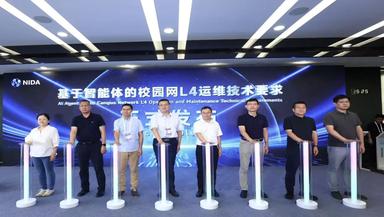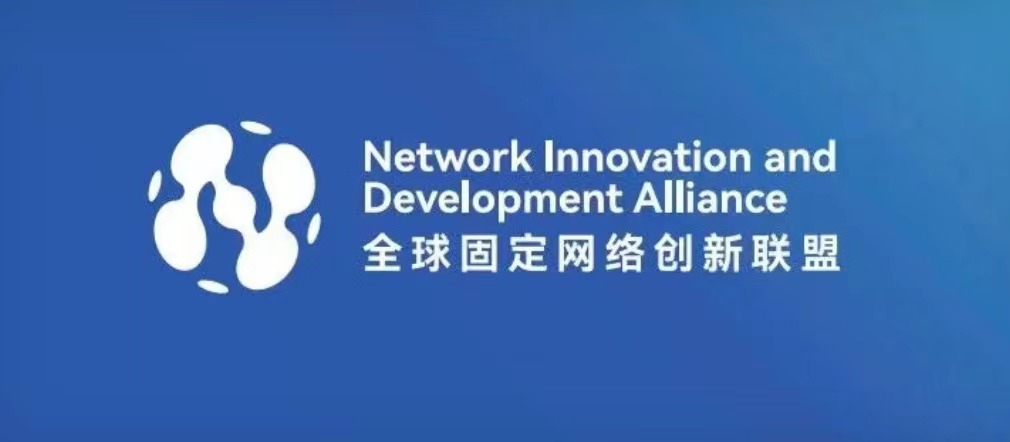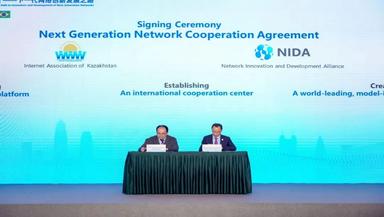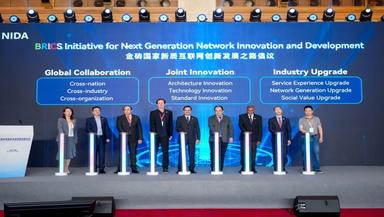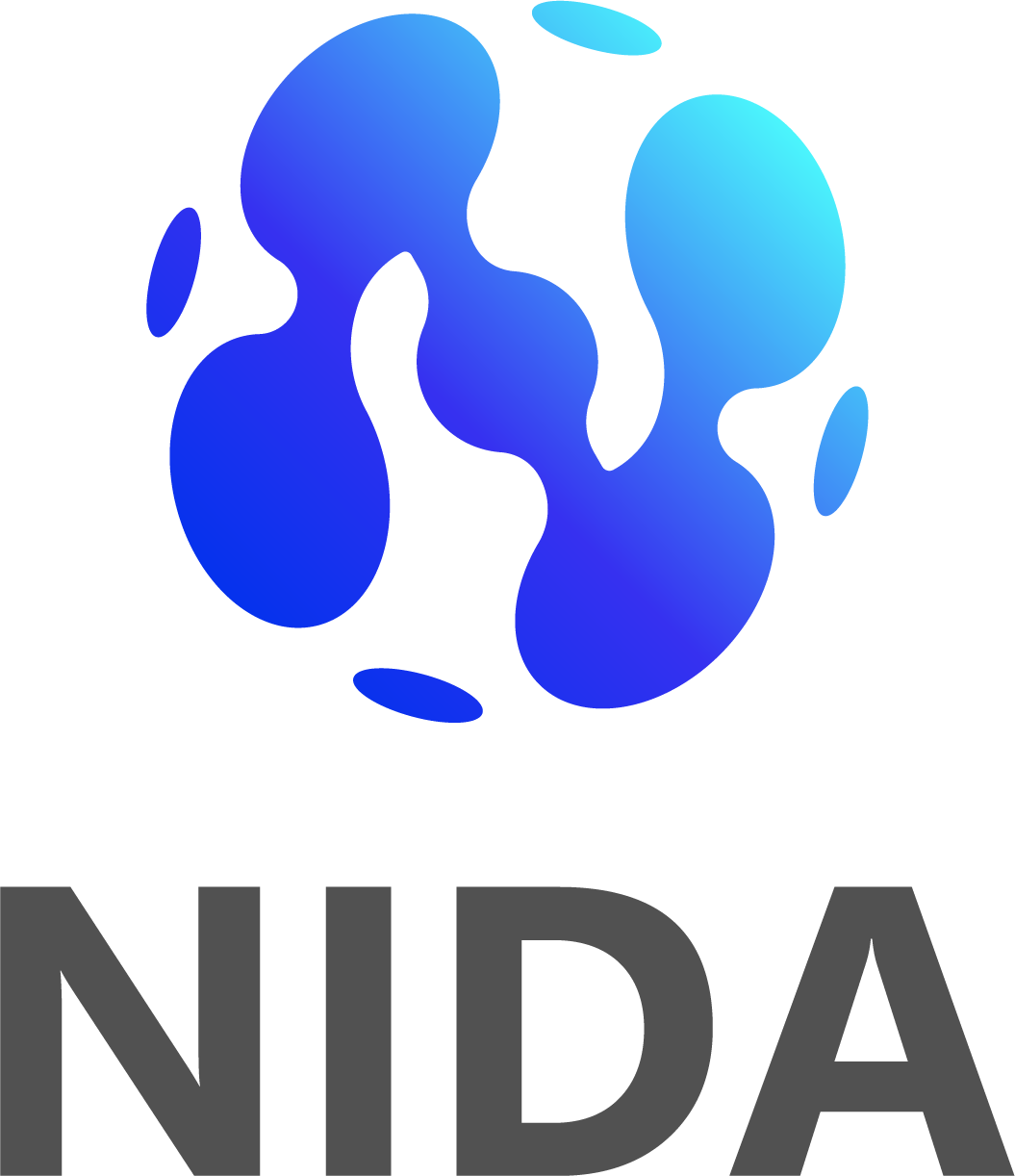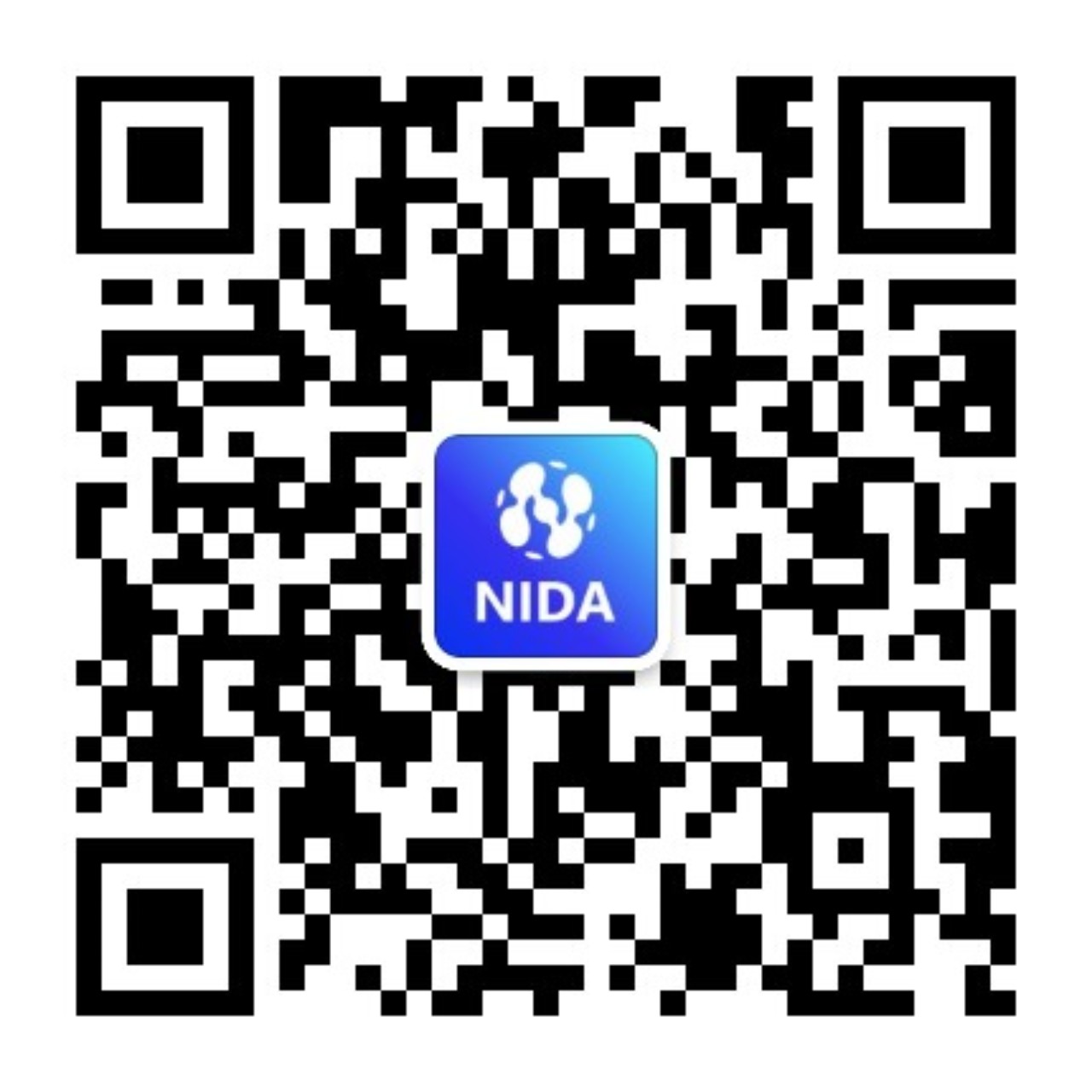[Shanghai, China, July 27, 2025] During the 2025 World Conference on Artificial Intelligence (WAIC), The Global Fixed Network Innovation Alliance (NIDA) has launched a collaboration between the Self-Intelligent Network Working Group and 12 universities, including China Research Institute of Information and Communication, Huawei, Shandong University, China University of Mining and Technology, Shanghai University of Science and Technology, Wenzhou Medical University, and Jiangsu Institute for Future Network Innovation. The Beijing Research Institute of China Telecom Co., Ltd. and the Research Institute of China United Network Communications Co., Ltd. jointly developed the world's first self-intelligent network construction standard for the education industry in the enterprise domain. The Technical Requirements for Agent-Based Campus Network L4 O&M (hereinafter referred to as "Standard") provides a set of forward-looking and feasible technical guidance for the construction and testing of the campus network L4 O&M system.With the rapid increase in the number of network devices and terminals on campus, the service requirements are becoming more and more complex, and teachers and students have higher and higher requirements on network service quality. However, in an existing O&M mode, managing and troubleshooting thousands of devices is time-consuming and labor-intensive, which severely affects user experience and increases the customer complaint rate. Fortunately, with the in-depth integration of AI and network technologies, we have a new opportunity to carry out research on closed-loop management of enterprise self-intelligent networks and promote intelligent enterprise network O&M systems.Based on the high-value scenario planning for L4 evolution of the self-intelligent network in the carrier domain and the practice experience of campus network O&M, the standard defines the L1 to L5 levels of the self-intelligent network O&M capability to improve O&M efficiency and dynamically optimize network performance to ensure user experience. Based on smart campus O M requirements and campus network O M experience, Wi-Fi network optimization and monitoring and troubleshooting are selected as high-value scenarios for campus network O M, and the target architecture for smart network implementation is defined. Define technical requirements based on intent understanding, environment awareness, data analysis, policy decision-making, and solution execution of the O&M management system to build a network AI brain model.The Technical Requirements for Agent-Based Campus Network L4 O&M points out the evolution direction and implementation path for campus network intelligence. The key technologies are network digital twin, large network model, and small algorithm model, to build a task-level self-intelligence closed-loop system for campus network agents. It will accelerate the intelligent network O&M of colleges and universities across the country to the new era of L4 self-intelligent networks.
2025-07-28
26
(The Ministry of Industry and Information Technology (MIIT) issues the Action Plan for Computing Interconnection, and enables the data communications industry to enable the computing Internet.)Recently, the Ministry of Industry and Information Technology issued the Computing Interoperability Action Plan (hereinafter referred to as the Action Plan), which for the first time proposed "promoting high-quality development of the data communications industry, supporting efficient data input and computing, and lossless interconnection of computing power." This strategic deployment not only elevates the data communications industry to the core position of the national digital economy infrastructure, but also marks the dual goals and requirements of "resource integration" and "efficiency leap" in China's computing Internet construction. As a bridge connecting computing power and applications, the data communications industry is becoming a connection engine driving the efficient operation of the computing Internet through continuous technological breakthroughs and industry upgrades. Joint computing is an important scenario for the new Internet. The Action Plan for Computing Interoperability issued this time has important guiding significance for the Alliance's standard-setting work. Therefore, this document is interpreted in detail:Data communication, computing power, "connection engine" in the Internet eraSince its birth, the data communications industry has played the role of "invisible wings", quietly supporting the development of various services. From the rise of the global Internet, which connects the world closely, to the popularization of the mobile Internet, which makes information within reach, to the in-depth convergence of the industrial Internet, which drives the digital transformation of various industries, data communication has always been a solid support behind it. With the advent of the computing power era, data communication is actively following the trend of the times. A series of innovative explorations have been launched around the computing power Internet, which injects continuous impetus to the efficient use of computing power and industry upgrade.Accounting scenario: Intelligent scheduling and efficient data inputThe computing network is responsible for transporting massive enterprise data to the computing power center. In intelligent computing scenarios, elephant flows become the norm. The load balancing technology used by traditional WANs fails, causing network congestion and packet loss. The network transport efficiency is lower than 40%. The data communication network uses elephant flow precise identification and flow-level scheduling technologies to achieve load balancing on the input network and increase the network capacity to over 90%. In addition, for sensitive enterprise data, data communication uses technologies such as wide area RDMA to ensure data security. Currently, multiple carriers and enterprises in the industry have built elastic and lossless intelligent computing WANs to provide integrated computing services, such as efficient input and calculation of massive samples and separation of storage and computing resources.Inter-compute network: Flexible scheduling, cross-domain computing power lossless interconnectionWith the ever-increasing computing power requirements, cross-DC computing power collaboration becomes a core requirement. However, traditional data communication networks use the best-effort mechanism, and packet loss will lead to a waste of computing resources. Data communication detects network congestion in real time and uses flow control technologies to implement global coordinated scheduling between data centers within thousands of kilometers, ensuring zero packet loss and efficient training. Network vendors, such as Huawei, have cooperated with multiple operators to complete live network verification, achieving long-distance cross-AIDC joint training without decreasing efficiency.Intra-calculation scenario: Efficient interconnection and efficient release of computing powerThe intra-computing scenario focuses on building a computing infrastructure to implement high-speed interconnection of computing nodes in a data center. With the explosive growth of AI-based large model traffic, the internal interconnection bandwidth of data center networks evolves from 200GE/400GE to 800GE/1.6TE. Intensity of communications poses greater challenges to data center network balance. Improving training efficiency becomes an urgent issue for data center networks. The data communication network uses the network-level load balancing algorithm to optimize path planning and eliminate network performance bottlenecks. The network throughput can exceed 95% and the AI training efficiency can be improved by over 10%. iFLYTEK cooperated with Huawei to build the first China-made computing platform Feixing 1 that supports the training of trillion-parameter large-scale models. The network peak throughput reaches 98%, supporting the release of computing power.Enablement scenarios: Data Communication Enables Computing Power to Benefit Thousands of IndustriesJust like power grid dispatching, data communication networks use technologies such as high-performance routers, traffic control, and intelligent dispatching to implement efficient interconnection of computing power in all scenarios, breaking computing power silos, and implementing flexible provision of computing power as a service, enabling enterprises to access computing power resources as easily as using electricity. Inject tremendous impetus into the intelligent upgrade of the industry. In the intelligent manufacturing field, data communication networks move cloud computing power to factories to support real-time device collaboration and AI quality inspection, improving production efficiency. The medical industry relies on lossless interconnection networks to achieve second-level CT image transmission and remote surgical guidance, enabling high-quality medical resources to cross regional barriers. In smart cities, computing power flows along with data to optimize traffic signals and energy allocation in real time. Urban governance changes from "human experience" to "algorithm decision-making".This "computing power grid" model not only reduces the waste of social resources, but also promotes the extension of innovation elements to the grass-roots level, laying an efficient, flexible, and inclusive foundation for the digital economy.Future-oriented: Data Communication Leads a New Chapter in Computing InternetThe Action Plan for Computing Interoperability also clearly states the need to lead computing interoperability, and calls on carriers and cloud service providers to actively carry out computing Internet experiments, collect innovative application cases of computing Internet, and carry out innovative practice activities. These measures will further stimulate innovation, promote technological breakthroughs and application scenarios in data communications, promote the development of the computing Internet to a higher level, and inject new and powerful impetus into the development of the digital economy.
2025-06-04
53
June 28, 2025– the 6th BRICS Forum on Future Network Innovation was grandly opened in Shenzhen. The Global Fixed Network Innovation Alliance (NIDA) successfully hosted the sub-forum "Universal and Meaningful Connectivity: Path for Next Generation Network Innovation". During the event, witnessed by representatives from over 20 international organizations, Shavkat Sabirov, Chairman of the Kazakhstan Internet Association, and Deng Yi‘ou, Secretary-General of NIDA, formally signed a MOU. This milestone marks a substantive advancement in bilateral cooperation and demonstrates significant progress in NIDA’s international strategy to advance global industry consensus and build a collaborative industry ecosystem.The two parties will collaborate comprehensively across multiple domains:1. Build a technology-leading global industry innovation platform for next generation network, empowering innovation across diverse industries and supporting digital transformation in critical sectors such as energy, healthcare, and agriculture.2. Co-host international internet technology forums, establishing new paradigms for global collaboration and creating mechanisms for technical dialogue among BRICS nations.3. Advance the development of "Pioneer Cities", cultivating world-class benchmarks for next generation network cities and promoting top-tier urban network infrastructure.This strategic partnership agreement establishes a technology-standards-policy-industry multi-dimensional integrated framework. Guided by principles of joint technology R&D, ecosystem co-construction, and value sharing, and leveraging the "Pioneer Cities" Initiative as a strategic anchor, both parties will jointly create a model for international industrial organization collaboration.
2025-04-30
33
BRICS Next Generation Network Pioneer Cities Development Initiative
Shenzhen, April 28, 2025– The 6th BRICS Future Network Innovation Forum grandly opened at the Wuzhou Hotel in Shenzhen. Over 200 distinguished guests from government agencies, expert circles, and corporations across BRICS nations and global stakeholders—including representatives from Brazil, China, Malaysia, Kazakhstan, and the Arab region—gathered to delve into topics such as next generation network technology innovation, infrastructure evolution, and global collaboration, jointly charting the roadmap for future network development.During the forum, the Global Fixed Network Innovation Alliance (NIDA), in partnership with BRICS national representatives, jointly launched the Pioneer Cities Development Initiative. The event also featured the successful hosting of the sub-forum "Universal and Meaningful Connectivity: Path for Next Generation Network Innovation" and the signing of a MOU with the Kazakhstan Internet Association. This agreement will provide standardization and technical consulting support for the construction of Kazakhstan’s Pioneer Cities.Opening Ceremony: BRICS Launch "Next Generation Network Pioneer Cities Development Initiative"At the opening ceremony of the forum, the "Ceremony of the BRICS Next Generation Network Pioneer Cities Development Initiative" was officially launched. This initiative focuses on promoting the construction of next generation network infrastructure across BRICS nations, leveraging the New Generation network to accelerate innovation implementation and drive industry upgrading.At the Launch Ceremony, the Following Representatives Participated:1. Representative from Ministry of Industry and Information Technology (MIIT);2. Representative from Shenzhen Municipal Bureau of Industry and Information Technology;3. Representative from Shenzhen Communications Administration Bureau;4. Allan Coelho de Seixas, Representative from Brazil;5. Sureswaran Ramadass, Chair,APAC IPv6 Council;6. Sami Trimech, ICT Department Director, Arab ICT Organization;7. Shavkat Sabirov, President, Internet Association of Kazakhstan;8. Ganbin, Vice President ,Huawei Technologies Co., Ltd.;9. Jing Tao, Vice President,Beijing Jiaotong University, Chair,NIDA;Pioneer Cities Initiative: Committed to promoting next generation network infrastructure construction across BRICS nations based on the Next Generation network, accelerating innovation implementation, and driving industrial upgrading.In November 2024, during the World Internet Conference in Wuzhen, the Global Fixed Network Innovation Alliance (NIDA), in collaboration with 8 industry organizations, jointly launched the "Next Generation network Pioneer Initiative" globally. The initiative proposed a 3 years plan to cultivate 100 Thought Pioneers, 100 City Pioneers, and 100 Commercial Pioneers to advance industrial development.BRICS Representatives Jointly Launch the Pioneer Cities Development InitiativeSub-forum: Accelerating the Transition of the Next Generation network from Industry Vision to Society ValueChaired by Sureswaran Ramadass, Chairman of the Asia-Pacific IPv6 Council, the sub-forum featured keynote speeches by Thyago de Oliveira Braun Guimaraes, Coordinator for Research and Connectivity at Brazil’s Ministry of Communications, and Jing Tao, Vice President of Beijing Jiaotong University and Chairman of the Global Fixed Network Innovation Alliance (NIDA). Both emphasized that next generation networks have become a cornerstone of digital development for BRICS nations, stressing that advancing such infrastructure is an urgent priority.Representative of Brazil's Ministry of Communications, Thyago delivered a speech at the forum. "The Next Generation Network represents a critical direction for the evolution of future networks."Keynote Speech by Deng Yi’ou, Secretary-General of NIDA, titled ”From IPv6+ to the Next Generation network” The Next Generation network achieves technological innovation and breakthroughs in four areas: ultra-wide new connectivity, protocol new expansion, network new intelligence, and security new mechanisms. It supports massive integration of compute, data, and intelligent terminals. By synergizing with satellite communications, it establishes a multi-dimensional network (air, land, sea, and space), delivering capabilities such as high bandwidth, low latency, deterministic performance, and ubiquitous security. This framework is not only a vital path for next-generation network evolution but also the optimal choice for BRICS nations’ infrastructure upgrades.Professor Huang Tao from Beijing University of Posts and Telecommunications delivered a keynote speechProfessor Huang Tao from Beijing University of Posts and Telecommunications delivered a keynote speech, introducing China’s Future Network Large-Scale Scientific Infrastructure (CENI). He highlighted its achievements, including a 40-city testbed and breakthroughs in compute-network integration and intelligent scheduling. He emphasized:"In the era of intelligent internet, networks must evolve from ‘information pipelines’ into intelligence-native entities integrating compute, models, and data, driving holistic advancements in architecture, devices, and control systems."Advancing Next Generation Network Standards and Industry ConsensusTang Xiongyan, Vice President of China Unicom Research Institute & NIDA Vice Chairman, released the Network 2030 report, outlining the New Generation Internet’s characteristics: Global connectivity, Green ultra-wideband, Deterministic services, Compute-network fusion, Intelligence-native design, Security-by-design.The report reaffirmed adherence to international IP standards for global interoperability while advancing equitable governance of internet resources like IP addresses and domain names.Wang Shaopeng, Deputy Director of the Data Center Department at CAICT’s Cloud Computing & Big Data Research Institute, unveiled the Intelligent Data Center Network Grading Evaluation Standards for the New Generation Internet.Building a New Generation Internet with Shenzhen’s Advantages to Establish Industry BenchmarksZhang Sha shared shenzhen "Ultra-Fast Broadband Pioneer City" experienceZhang Sha, Director of the Radio Monitoring and Management Station at Shenzhen Municipal Bureau of Industry and Information Technology, shared Shenzhen’s experience and plans for developing the "Ultra-Fast Broadband Pioneer City". On April 27, 2025, Shenzhen officially released the 2025 Action Plan for Ultra-Fast Broadband Pioneer City, outlining four strategic tasks and 18 specific initiatives. The plan aims to build a New Generation Internet with Shenzhen’s strengths, drive the evolution of networks toward ultra-high-speed, large-capacity, and intelligent infrastructure, establish a comprehensive smart network system covering land, sea, air, and space, and enhance the supply capacity for high-quality digital economic development. This initiative solidifies Shenzhen’s competitive edge in information and communications technology.From China to Global: Supporting BRICS Network UpgradesDuring the forum, the Kazakhstan Internet Association and NIDA signed a Memorandum of Understanding (MOU) on New Generation Internet collaboration, marking the official launch of joint efforts in technology innovation and standard interoperability.Kazakhstan Internet Association and NIDA Sign MOUAdditionally, the BRICS Initiative for Next Generation Network Innovation and Development was officially launched, calling on nations to strengthen global collaboration, joint innovation, and industry upgrades to collectively advance the implementation of United Nations Sustainable Development Goals.BRICS Initiative for Next Generation Network Innovation and DevelopmentThe successful convening of this forum marks a solid and pivotal step in implementing the BRICS Next Generation network Pioneer Cities Development Initiative across member states. Consensus on the New Generation Internet’s industrial direction has gradually translated into actionable network upgrade efforts. NIDA will continue to Consolidate global industrial consensus, Advance standardization and joint innovation, Provide strategic guidance for deploying Pioneer Cities and commercial ecosystems, Co-create a new chapter in global network development, Strive tirelessly to build a better digital future!
2025-04-30
30
